| Encyclopedia of Tours and Travel to Maharashtra, featuring information on Fairs & Festivals, Wildlife, Excursion, Adventure and Weather of Maharashtra. |
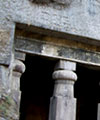 |
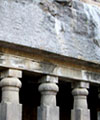 |
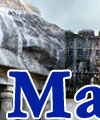 |
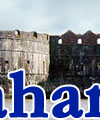 |
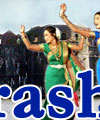 |
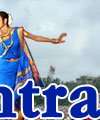 |
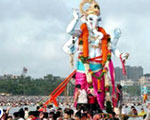 |
||
|
Excursion
Museums Bombay Natural History Society Timings:
10.00 am to 1.30 pm 2.00 pm to 5.00 pm (not open to public)
Bharata Itihasa Samshodhak Mandal The collection, increased by personal donations, is a rich repository of new and rare books, manuscripts, documents, coins, paintings, sculpture and weapons. Along with illustrated manuscripts are books on religion, philosophy, ritual, grammar, astrology, astronomy and medicine. Most of the written matter is in Marathi and Sanskrit. There are also some interesting 18th century maps and charts. Most of the paintings in the picture gallery are donated. Almost all the schools of miniature painting, dating to the 15th and 16th century, are on display. Also on view is a fine collection of glass paintings from the 18th and 19th century. However, the most remarkable pieces are a medieval Gauri-pata and a painting of Varanasi ghats. This is a perspective view of the ghats with rows of tiny flame shaped holes punctured along the numerous terraces, parapets and windowsills. When held against the light, the painting creates an illusion of hundreds of glowing lamps illuminating the ghats. Bharata Itihasa Samshodhaka Mandala Timings: 8.30 am to 10.30 am 4.00pm to 8.00pm Heras Institute of Indian History & Culture Heras Institute of Indian History and Culture Timing:
2.00 pm lo 4.00 pm on Thursdays and by appointment on other weekdays.
Jehangir Nicholson Museum of Modern Art Jehangir Nicholson Museum of Modem Art
Timing: 11.00 am to 7.00 pm Open on all days.
Nehru Science Center A small gallery deals with life sciences and the evolution of man. Here a transparent woman, a mannequin, explains to visitors about the human anatomy. Discovery and computers are highly popular. The Science Park gives visitors a chance to experiment with exhibits, press levers, turn wheels, roll balls, pull strings and look through periscopes and telescopes. Science at the Centre is not a dull, theoretical subject. Instead, through observation, participation and other related activities scientific knowledge and formulae is inculcated in children. Nehru Science Centre
Timing:
12.00 noon to 7.00 pm
Prince of Wales Museum of Western India The basalt stone structure with its large central dome inspired by the Bijapur domes and beautiful gardens are set in a crescent shaped piece of land. The major attempt of the Art section at the museum was to develop its collection of Indian paintings so that it represents the different styles and phases. Consequently the collection presents the evolution of painting in India, ranging between 11th and 12th century illustrated palm leaf manuscripts to early 19th century Pahari paintings. Exquisite examples of all the main schools of miniature painting are on view, Rajput, Mughal, Pahari, and Deccani Each school with its characteristic style has its own delicacy of form and colour. Looking at the different paintings it is obvious that the fine excellence of the Mughal and Rajasthani schools, from 16th to 19th century, only emerged out of past influences, indigenous Indian as well as Persian, Turkish and central Asian. This has been conceived according to the Museum's policy, to make it an important cultural and educational centre. Prince of Wales Museum of Western India
Timing:
10.15 am to 5.00 pm
Raja Dinker Kelkar Museum The metal objects include locks, ink pots, ritual bowls and nutcrackers. There is also an assortment of oil lamns in and copper. Another collection is of the paintings from addition is the section on women, which depicts their important role in Indian society. Raja Dinkar Kelkar Museum Timings:
10.00 am to 5.00 pm.
|
||||||||||
|
||||||||||
|
||||||||||
|---|---|---|---|---|---|---|---|---|---|---|